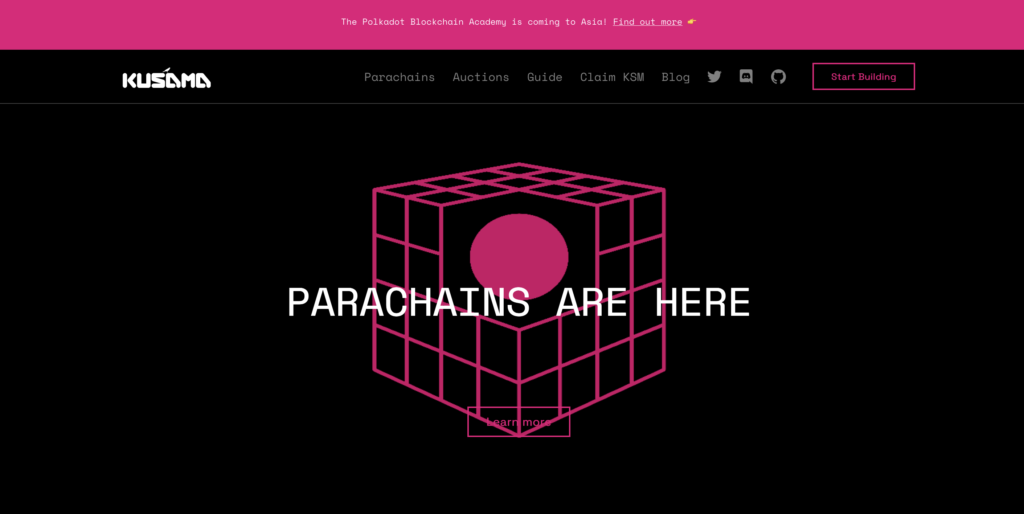Kusama, often described as Polkadot’s wild cousin, is an experimental blockchain platform designed to provide a proving ground for developers looking to innovate and push the boundaries of decentralized technology. The platform’s native cryptocurrency, KSM, plays a crucial role in maintaining the network’s operations and incentivizing participants. This article delves into the various aspects of Kusama and KSM, examining its unique attributes, technological foundations, and the ecosystem that supports its growth. Through this exploration, we aim to provide a comprehensive understanding of Kusama’s potential and the future trajectory of its development.

What is Kusama?
Kusama is an experimental blockchain platform that serves as a proving ground for developers looking to innovate and test new features before deploying them on the Polkadot network. It is often referred to as Polkadot’s “canary network” due to its role in early experimentation and risk-taking. Kusama is built using Substrate, a modular framework developed by Parity Technologies, and shares much of its codebase with Polkadot. This close relationship allows projects on Kusama to be easily transitioned to Polkadot if they prove successful.
The platform provides an environment for rapid iteration and development, enabling teams to deploy new applications and upgrades quickly. It features a highly scalable multichain architecture that supports multiple parallel blockchains, known as parachains. These parachains benefit from shared security provided by the central Relay Chain, which validates transactions and maintains the overall network integrity. Kusama’s governance is highly decentralized, involving a community-driven process where KSM token holders can propose and vote on changes to the network, ensuring a dynamic and adaptable ecosystem.
History of Kusama
Kusama was founded in 2019 by Gavin Wood, a co-founder of Ethereum and the founder of Polkadot. Wood’s vision for Kusama was to create a “canary network” that could serve as a testing ground for new technologies and governance models before they were deployed on Polkadot. Here are some key milestones in Kusama’s development:
- 2019: Kusama was launched as an early, unaudited version of Polkadot, allowing developers to experiment with and test the new network’s features in a real-world environment.
- 2020: The network saw the introduction of parachains, enabling developers to create specialized blockchains connected to the Kusama Relay Chain.
- 2021: Kusama conducted its first parachain slot auctions, allowing projects to secure a slot on the network and further decentralize its ecosystem.
- 2022: KILT Protocol became the first project to transition from a Kusama parachain to Polkadot, demonstrating the practical use of Kusama as a preparatory environment for Polkadot deployments.
- 2023: Continued expansion of the ecosystem with more projects launching parachains and participating in Kusama’s governance processes, showcasing the network’s maturity and robustness.
Kusama continues to evolve, offering a fast-paced environment for blockchain innovation and serving as a critical component of the broader Polkadot ecosystem. Its unique position allows it to facilitate the testing and refinement of new blockchain technologies, contributing significantly to the advancement of decentralized networks.
How Kusama Works
Kusama is built on a highly advanced technological framework designed to support rapid innovation and experimentation in the blockchain space. Leveraging the Substrate framework, Kusama allows developers to build custom blockchains tailored to their specific needs while ensuring seamless integration with the Kusama network. Here’s an in-depth look at the technologies and mechanisms that power Kusama and differentiate it from other blockchain projects.
Technological Foundations
Kusama utilizes Substrate, an open-source framework developed by Parity Technologies, which allows for the creation of highly customizable and interoperable blockchains. Substrate provides modular components such as consensus, networking, and finality gadgets, enabling developers to build complex decentralized applications (dApps) with ease. This flexibility ensures that projects can innovate without being constrained by the limitations of more rigid blockchain frameworks.
Unique Features
- Interoperability: Kusama is designed as a multichain network, enabling multiple blockchains (parachains) to operate in parallel while being secured by a central Relay Chain. This architecture ensures high scalability and cross-chain compatibility, facilitating seamless communication between diverse blockchain networks.
- Governance: Kusama employs a highly decentralized governance model, where KSM token holders can propose changes, vote on key decisions, and elect council members. This community-driven approach ensures that the network evolves in line with the interests of its stakeholders, promoting a more democratic and transparent ecosystem.
- Economic Model: Kusama provides a low-barrier entry for projects, allowing startups and experimental initiatives to launch their blockchains with minimal economic constraints. This encourages a wider range of projects to test their ideas on Kusama before potentially migrating to the more stable Polkadot network.
Blockchain and Consensus Mechanism
Kusama’s blockchain architecture comprises several key components that ensure its security, efficiency, and resilience.
Hybrid Consensus
Kusama uses a hybrid consensus mechanism that combines two protocols: BABE (Blind Assignment for Blockchain Extension) for block production and GRANDPA (GHOST-based Recursive ANcestor Deriving Prefix Agreement) for finality.
BABE (Block Production):
- Mechanism: BABE is responsible for determining the authors of new blocks. It operates through a randomized lottery system that assigns block production slots to validators based on their stake.
- Process: Validators participate in epochs, which are divided into slots. Each slot represents a short time frame during which a validator may be selected to produce a block. This process ensures that block production is decentralized and fair.
- Advantages: The use of a probabilistic approach for block production allows for continuous block creation, enhancing the network’s throughput and reducing latency.
GRANDPA (Finality Gadget):
- Mechanism: GRANDPA is responsible for achieving consensus on the final state of the blockchain. Validators continuously vote on the validity of blocks, and once a supermajority (more than two-thirds) agrees on a chain, all preceding blocks are finalized.
- Process: This protocol operates independently of block production, allowing it to provide strong finality guarantees without impacting the network’s performance.
- Advantages: GRANDPA’s ability to finalize entire chains rather than individual blocks ensures rapid and secure finality, even in cases of network partitioning or failures.
Technical Details
- Block Time: Kusama’s block production slots are approximately 6 seconds long, ensuring a fast and efficient transaction processing rate.
- Validator Selection: Validators are chosen through a combination of staking and randomness, which helps distribute block production responsibilities fairly and securely.
- Scalability: The network’s sharded architecture, where parachains operate in parallel, significantly enhances its scalability compared to traditional single-chain blockchains.
Tokenomics of Kusama (KSM)
Kusama’s native cryptocurrency, KSM, plays a pivotal role in the network’s operations and governance. The tokenomics of KSM are intricately designed to support the project’s goals of rapid innovation and decentralized governance. Here’s an in-depth look at KSM’s tokenomics, its emission model, and price performance.
Token or Coin?
KSM is a token, specifically the native utility and governance token of the Kusama network. Unlike coins that operate on their own blockchains, tokens are typically used within specific projects or ecosystems. In the case of KSM, it is integral to Kusama’s multichain architecture and its governance processes.
Emission Model
Kusama has a total supply of 10 million KSM tokens, but it does not have a fixed maximum supply. Instead, the network employs an annual inflation rate of 10% to incentivize participation and maintain the network’s security and governance processes. This inflationary model ensures that new tokens are continually introduced into the ecosystem, which are primarily distributed as rewards for staking and validating the network.
The token distribution and reward mechanisms are designed to encourage active participation from KSM holders. Validators, who are responsible for maintaining the network’s integrity, receive rewards in the form of newly minted KSM tokens. Nominators, who delegate their KSM to trusted validators, also earn a portion of these rewards, thereby supporting the network’s security and decentralization.
Governance and Utility
KSM tokens are essential for Kusama’s on-chain governance. Token holders can propose changes, vote on governance proposals, and participate in referenda. The governance process on Kusama is notably faster than on Polkadot, with proposals being voted on and enacted within 15 days, compared to Polkadot’s 30-day cycle. This expedited process aligns with Kusama’s role as an experimental and agile network.
In addition to governance, KSM tokens are used for staking, bonding, and participating in parachain slot auctions. Staking KSM helps secure the network, and validators are selected based on the amount of KSM staked. Bonding KSM is required for projects that wish to secure a parachain slot on Kusama, facilitating the development and deployment of custom blockchains within the network.
Market Performance
As of recent data, KSM has a circulating supply of approximately 8.98 million tokens and a total supply of 10 million. The token has experienced significant price volatility, reflecting its role in a rapidly evolving experimental network. For instance, KSM reached an all-time high of $624.99 in May 2021, showcasing the high demand and speculative interest in the token during periods of intense market activity.
However, the price has also seen substantial declines, with the token trading around $28.79 in recent times. This fluctuation is indicative of the broader trends in the cryptocurrency market and the specific dynamics of experimental networks like Kusama.
Where to Buy Kusama (KSM)
Kusama (KSM) can be purchased on several major cryptocurrency exchanges. Here is a list of exchanges where KSM is actively traded:
- Binance: Binance is one of the largest cryptocurrency exchanges globally, offering a wide variety of trading pairs and high liquidity for KSM.
- HTX (formerly Huobi): HTX provides extensive support for KSM trading, including various pairs and advanced trading features.
- MEXC: MEXC offers a robust platform for trading KSM with competitive fees and a user-friendly interface.
- Bybit: Known for its derivatives and spot trading, Bybit includes KSM among its supported assets.
- KuCoin: KuCoin is popular for its wide range of cryptocurrencies, including KSM, and features such as staking and lending.
Steps to Buy KSM on Binance:
- Create an Account: Sign up on Binance and complete the KYC (Know Your Customer) verification.
- Deposit Funds: Deposit fiat currency or other cryptocurrencies into your Binance account.
- Buy KSM: Navigate to the KSM trading pair (e.g., KSM/USDT) and place an order to buy KSM.
Where to Store Kusama (KSM)
Storing KSM securely is crucial for safeguarding your investment. Here are some recommended wallets for storing KSM:
- Polkadot.js Wallet: This is an official wallet for the Polkadot and Kusama ecosystems. It offers advanced features and is ideal for users participating in governance and staking.
- Trust Wallet: A widely-used mobile wallet that supports KSM, offering a user-friendly interface and strong security features.
- Ledger Nano S/X: Hardware wallets like Ledger Nano S and X provide offline storage, which is one of the safest ways to store KSM.
- Math Wallet: Supports multiple blockchains including Kusama, offering both mobile and browser extension versions.
- Fearless Wallet: Designed specifically for the Kusama and Polkadot ecosystems, it provides a seamless experience for staking and managing KSM.
Storing KSM Securely:
- Download and Install the Wallet: Choose a wallet that fits your needs and install it on your device.
- Create a New Wallet: Follow the instructions to set up a new wallet, ensuring you securely store your recovery phrase.
- Transfer KSM: Transfer your KSM from the exchange to your wallet’s address to ensure they are securely stored.
By following these guidelines, you can buy and store KSM securely, participating in the Kusama ecosystem’s various features and benefits.
Project Prospects
Basis for Growth
Kusama’s growth is anchored on its role as an experimental and innovative blockchain platform. Its design allows for rapid development and testing of new features, making it an attractive environment for developers looking to experiment before deploying on Polkadot. Kusama’s advanced technology stack, built using the Substrate framework, supports interoperability and scalability, enabling seamless integration and communication between various blockchains. This fosters a vibrant ecosystem of decentralized applications (dApps) and parachains, enhancing the network’s overall utility and adoption.
Clients and Partners
Kusama’s clients and partners include a wide array of projects and organizations within the blockchain space. Key participants and collaborators often include:
- Parity Technologies: The core developers behind both Kusama and Polkadot.
- Web3 Foundation: Provides funding and support for projects building on Kusama.
- Various Parachain Projects: Numerous projects, such as Karura, Moonriver, and Shiden, use Kusama to deploy and test their parachains before moving to Polkadot.
Development Forecast
Kusama is expected to continue its trajectory as a leading experimental blockchain. With the ongoing addition of new parachains and the maturation of its ecosystem, the network will likely see increased adoption and innovation. The emphasis on decentralized governance and community-driven development ensures that Kusama remains adaptable and responsive to technological advancements and market needs. As more projects utilize Kusama for testing and development, its role as a critical incubator for the Polkadot ecosystem will solidify further.
Ecosystem
Kusama’s ecosystem is rich and diverse, encompassing a wide range of projects across various domains. Here are some key components:
Parachains and Projects
- Karura: A DeFi hub on Kusama, offering features like a stablecoin, a decentralized exchange, and a liquidity staking derivative.
- Moonriver: Provides a smart contract platform compatible with Ethereum, enabling developers to deploy existing Solidity smart contracts with minimal changes.
- Shiden: Focuses on multi-chain decentralized applications, supporting various smart contract platforms such as Ethereum and WebAssembly.
- Calamari Network: A privacy-preserving protocol offering zkSNARKs-based private transactions.
- Bifrost: Aims to provide liquidity for staking assets, allowing users to stake and earn liquidity at the same time.
Ecosystem Characteristics
- Interoperability: Kusama supports cross-chain communication, enabling various parachains to interact seamlessly. This interoperability is vital for creating a cohesive and interconnected blockchain ecosystem.
- Scalability: By using a sharded architecture, Kusama can handle a high volume of transactions, making it suitable for large-scale applications.
- Customization: The Substrate framework allows developers to build highly customized blockchains tailored to specific use cases, enhancing innovation and flexibility.
Kusama continues to evolve, driven by its community and the ongoing development of new technologies. Its experimental nature and robust ecosystem make it a critical player in the blockchain space, fostering innovation and preparing projects for wider deployment on Polkadot.
Conclusion
In summary, Kusama stands out as a pioneering project in the blockchain space, offering a robust and experimental platform for decentralized applications. Its innovative technology, combined with a vibrant ecosystem and strategic vision, positions it well for future advancements. As the blockchain landscape continues to evolve, Kusama’s contributions to the field are poised to have a lasting impact, making it a project worth watching for enthusiasts and investors alike.






